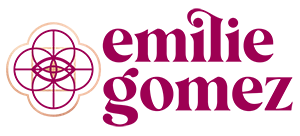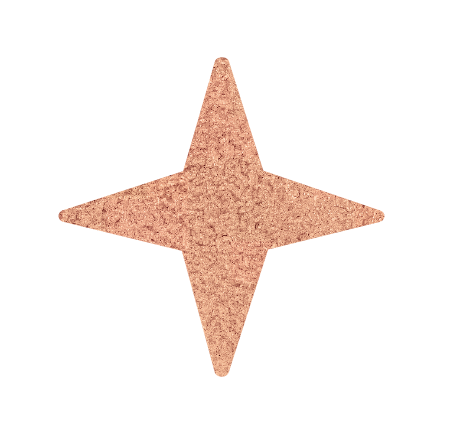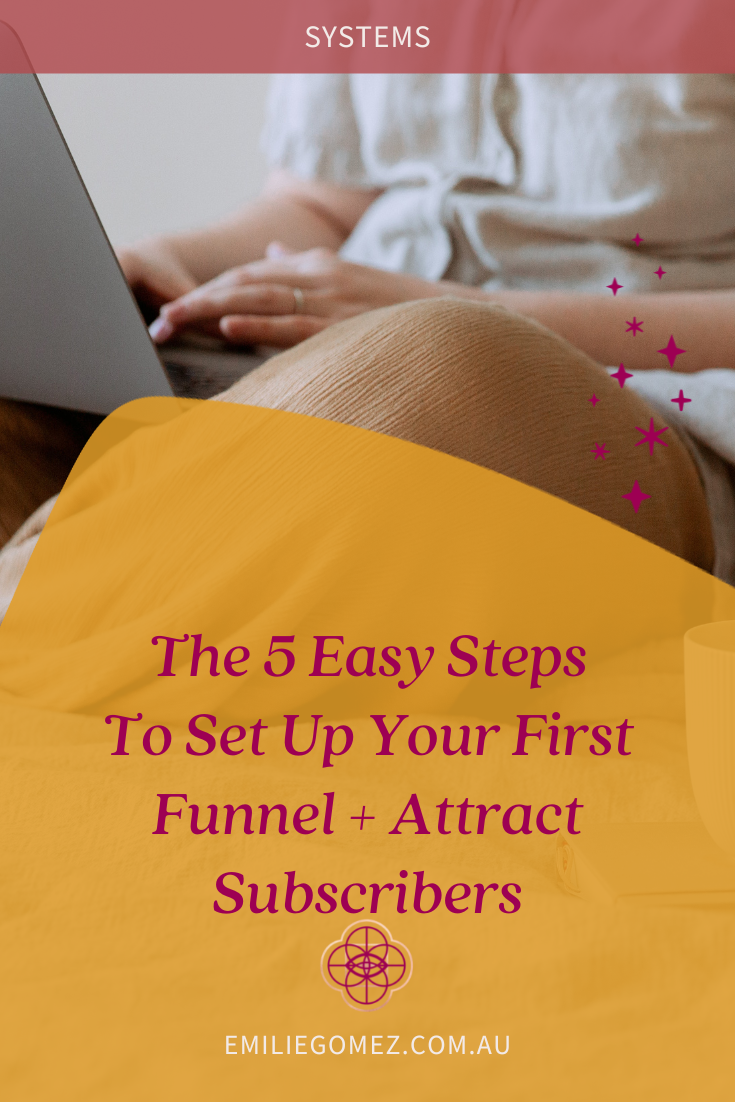This post contains affiliate links. If you sign up to an app using one of those links, I’ll get a small commission. I only recommend systems that I love and use in my business or with clients.
Despite what many online experts would lead you to believe, creating a lead magnet, or a freebie, requires some work. It’s not as simple as doing a brain dump of what you know in a Google Doc and then sending it to people.
This approach is flawed because:
- What you know (and I’m sure you know a lot) may not align with your business, your strategy and your other offerings.
- It may not meet the needs of your ideal client and offer a solution to the challenges they are currently facing.
- It doesn’t address the tech aspect of how to deliver the freebie, which is what you’re most likely struggling with.
- It doesn’t take into account your branding and how you want to be perceived by your ideal client. If simplicity is your thing, then a Google Doc may be your friend. It isn’t, though, if you’d prefer to be seen as professional and sophisticated. For that, you’d have to spend some time pretty up that document (which is totally doable).
- It doesn’t address the primary goal of a lead magnet. A freebie’s purpose goes beyond attracting subscribers. It’s also about nurturing those new followers and introducing them to you and your business so they will later want to work with you.
So let’s talk about how to really create your first funnel so it’s effective and attracts your ideal client.
1. Create a lead magnet
A lead magnet can take many forms – how-to guide, checklist, quiz, meditation, video series. Regardless of the format you choose, it should:
- Address your ideal client’s needs, even if it’s only creating awareness about where they’re at. Quizzes often do that and, if done correctly, they’ll also provide 3 action steps.
- Be short and actionable. Suppose you’re sharing a multi-page PDF with lots of text. When people open it, they may feel discouraged or think “I don’t have time for this right now, I’ll get to it later”. As a subscriber, I know I’ve done that many times… and never open those documents again! If that’s you, then you’ve lost your opportunity to show your ideal client how you can help them. As a business owner, I made this mistake with my first freebie. I was very excited to share how to create a content calendar. Despite some positive feedback about how valuable the guide was, some subscribers felt they needed to set an hour or so aside to read and action it. They might have felt more compelled to come back to it if they had paid for it.
- Provide value. It’s not because it’s free that you can offer anything. Show your ideal client that you understand them, and you’re the right person to help them. If you don’t, they’ll likely unsubscribe from your mailing list straight away.
Depending on your freebie format and your email marketing system, you’ll need to store it somewhere, such as Dropbox or Google Drive. If you use Google Drive, make sure the sharing permission for the file is set to “On – Anyone with the link”.
2. Write your welcome sequence
A welcome sequence, also known as a nurturing sequence, is a way for you to:
- warmly welcome your new subscriber to your community
- show them they’re in the right place
- start building a relationship (and trust) with them before selling them your offerings
- educate them about you, your journey and how your offerings may serve them
- deliver value with your freebie and each email in your nurturing sequence
A welcome sequence usually has 6 emails, but it really depends on what you’re offering and what you think your subscribers need to hear before they want to work with you. So, before you write 6 emails just because that’s what everyone does, think about the intention behind your nurturing sequence. It’s more than delivering a freebie. It’s about building a relationship.
Assuming you have a freebie and you’re looking to get people to sign up for a free session with you, here are the 6 emails you could send:
- Deliver your freebie. You don’t want to distract your subscriber by sharing too many links or information in that first email. So keep it short and to the point.
- Check in to make sure they have received (and opened) your freebie. This is the opportunity to remind them why your opt-in is valuable and why they need to look at it right now. It’s also your chance to start the conversion by asking them questions. For example, what have they learnt from using your lead magnet?
- Formally welcome them. This is the time to introduce yourself and welcome your new subscriber to your community. Tell them what to expect from being on your list (e.g. monthly newsletter). You can also share any blog posts or resources you think they might enjoy between now and your next newsletter. These would ideally be related to your freebie and provide continuity by helping them with their next steps. This is an excellent way for them to get to know you and your work even more.
- Introduce the product you’d like them to buy or service you’d like them to book next. Your nurturing sequence isn’t just about delivering your lead magnet and introducing yourself, it’s also about promoting one of your offerings. Use this email to share about one of your offerings (that is the logical next step from your freebie) and why you’re the right person for the job. For example, share how it came to be – which can be your own journey. You can also use this email to highlight some of the results. But, don’t spend too much time on this part as the next email will expand on it.
- Share a case study. Describe the experience of one of your clients (paid or pro bono). Start with where they were at before working with you and explain how you supported them (i.e. describe your offering) and the results they achieved. This is about showcasing your offering (which is the same offer as email #4) without making your subscriber feel like they’re reading a sales page.
- Handle objections. Not everyone will be ready to take the next step after emails 4 or 5. Some people may have questions and not voice them. Use email 6 to answer any queries people might have. These are usually objections around time and money. Although it may be different for you and your market audience, so make sure to select something pertinent to your ideal client. Pick the most common objection you’ve heard about your offering and give an example of one of your clients who successfully overcame that issue. If your business is new, brainstorm the doubts your ideal client might have and write down how you would answer. You can use your own story as an example if it’s relevant.
You would send email 1 immediately after they sign up and all the other emails one or two days apart. Again, do what feels right for you and your community. There is no right or wrong.
3. Automate your welcome sequence
Because people will sign up at different times and you can’t monitor your system 24×7, you’ll need to be able to automate this whole sequence.
Most email marketing providers have these feature nowadays (it certainly wasn’t the case when I started 9 years ago). However, some providers like MailChimp and ConvertKit will charge you for this feature. MailerLite doesn’t as long as you have less than 1,000 subscribers and send less than 12,000 emails/month.
I personally use MailerLite and recommend it to all my clients who are just starting.
Before you create your automation, you’ll want to create a group or a tag. Different email marketing systems use different terminology – MailerLite uses groups, Mailchimp, and ActiveCampaign use tags.
The group (or tag) is used so that you know how to trigger the automation. As your business grows and your offerings expand, you’ll want to be able to differentiate between the different offerings and what workflows to start when. Groups (or tags) are a way to do just that.
You don’t want to use a trigger such as “added to list” otherwise anybody you add will receive the freebie which may not be relevant. This would be the case if you add people to your mailing after they’ve booked a session with you and ticked the newsletter sign up box.
Be as specific as you can in naming your group while being concise. For example, you could use “O: [Acronym of your optin]” when O stand for opt-in. This will help you remember what the group is for and quickly find it.
Once you’ve created your group or tag, you can create your automation. You should use the same name as your group so that you can quickly identify all the elements linked to your opt-in.
Each platform will be different here. Some, like Ontraport, will allow you to use emails that you have created in the email section of the system. Most systems, however, will make workflow emails only available in that automation. This means that this is where you have to create them.
A welcome sequence is straightforward and only requires email and delay after each email. Some systems will have a specific step to end a workflow though, so make sure to add this as your last step. However, before you do that, you want to make sure to add your new subscribers to your main list.
You want to make sure that you don’t add your new subscribers to your main mailing list at the start of your workflow. This will prevent them from receiving your newsletter while they’re still on your welcome workflow. If you don’t do that, then they’ll get 2 emails from you in one day. This can be both overwhelming and confusing as your newsletter may be promoting something different from your nurturing sequence. They’ll likely unsubscribe before they even finish your welcome workflow.
4. Create a landing page
You need a page to promote and share your lead magnet and a form to capture visitors’ details.
You have 2 options here:
- If you don’t have a website, you’ll want to create a landing page. Landing pages are included in MailerLite’s free plan too, so you don’t need to sign up for leadpages.com or any other system.
- If you already have a website, you can go with option 1 as well. Or if you prefer, you can create a landing page on your site and use an embedded form. The pros are that it will match your branding and use your URL. On the other hand, if web design isn’t your forte, option #1 will provide lots of templates for you to choose from and customise.
In both cases, you’ll only want to capture the first name (so you can personalise the emails) and the email address. Don’t ask for any other information unless you really need it. The more information you required and the more personal it is, the more unlikely it is that people sign up.
Be creative with your call-to-action, i.e. the label of your button. “Subscribe” or “Sign up” can be off-putting and doesn’t show the value of what they’re getting. Consider instead something like “Get the guide”.
You’ll also need to create a thank you page. Use this page to tell your new subscribers about the next steps (i.e. go check their inbox). You can also use this page to invite them to join your free community.
You’re now (almost) ready to share with the world. But, before you do so, you’ll want to test that it’s all working as expected. Here’s how to test thoroughly:
- add your details via your landing page
- check that the thank you page is displayed
- ensure the first email is sent immediately
- confirm you’ve been tagged (or added to the group) in your email marketing system
- verify you’ve been added to the workflow, and you’re on the first wait element.
5. Share with the world!
If it all worked as expected, go ahead and share your page with the world! Share it everywhere you can:
- Add the link to your social media profile (e.g. Instagram or Pinterest).
- Share it as a post on your social media platform.
- Share it in your Instagram and/or Facebook story.
- Add the link to your personal Facebook profile.
You can also repurpose the content of your lead magnet to create multiple posts to share on social media and promote your freebie over a few weeks or months.
Conclusion
Although it doesn’t have to take you weeks or months to create a freebie, it still requires some work and some planning. Your lead magnet is the first taste of your work that your ideal client gets. You want to make sure that you’re offering something of value that makes people want to get to know you further and eventually work with you. At the same time, you want to be mindful of not getting caught up in the perfectionism cycle.
You also want to take this opportunity to connect further with your new subscriber by sharing some valuable information about you and your offerings over a few emails.













